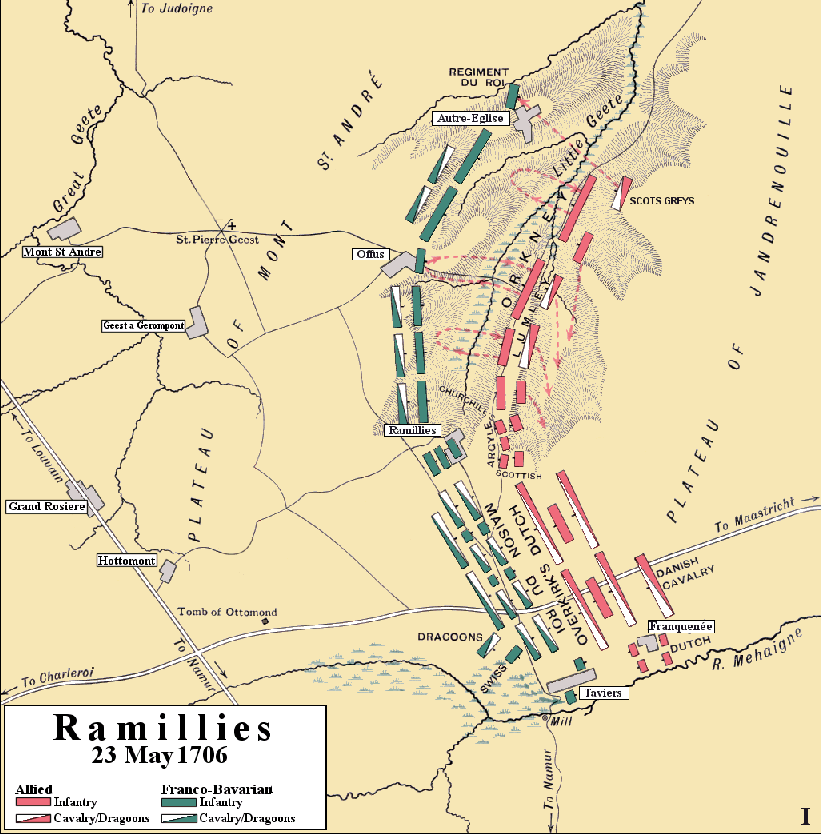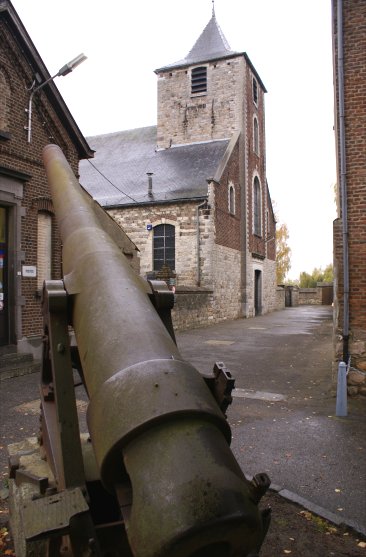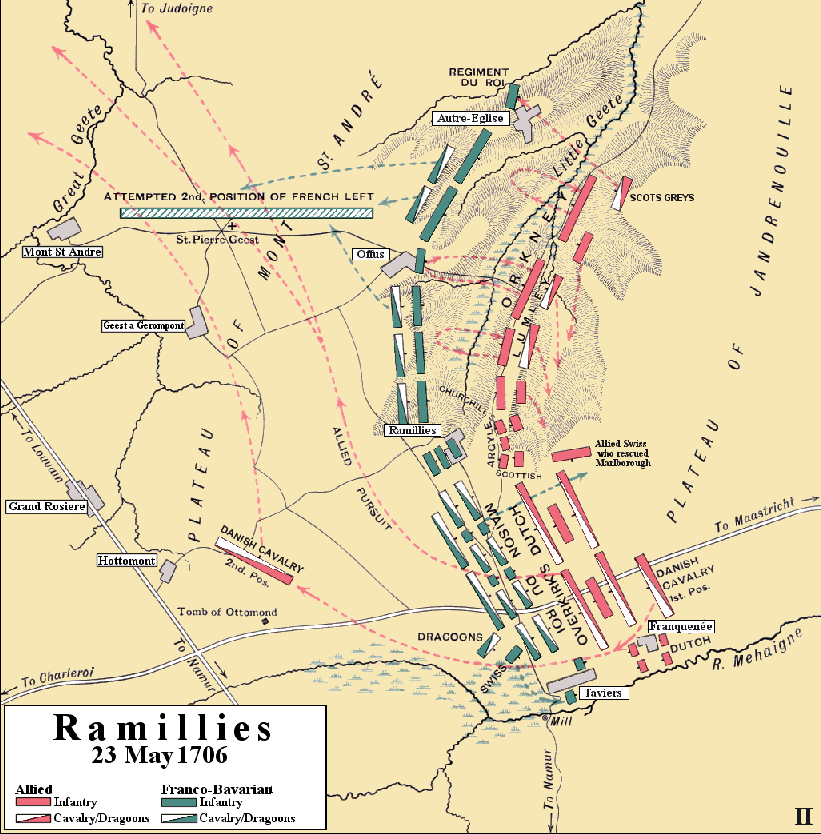Marching from near Maastricht toward Namur, Marlborough threatened to gain a position in which he could either march on Brussels or cut off the French army. Villeroi marched south from Louvain to intercept. A choke point along the Allied line of advance was at Ramillies where a plain one and a half miles wide stretched from the Mehaigne River to the town of Ramillies with a marshy creek, the Little Geete, beyond. Marlborough hoped to march beyond this choke point and reach Mont St Andre - then do battle with the French before they could withdraw behind the safety of the River Dyle. Delayed by waiting for the Danish contingent, which had not been paid properly, Marlborough got to Ramillies after the French, who positioned their cavalry in the plain south of town and their infantry behind the marshy creek north of it. At Ramillies Villeroi could block an Allied advance straight ahead - or he could threaten the Allied flank if Marlborough advanced from there to south to Namur. So Villeroi assumed the defensive.
Marlborough immediately deployed his cavalry in front of the French cavalry, pinning the French in position while the rest of his army arrived. Pinning the French cavalry also made a battle likely. At 2pm on May 23rd an artillery duel began. Villeroi's line was a long one - four miles for around 60,000 men - but it included several villages to aid the defense. With rough terrain to the north, the French left was anchored on Autre-Eglise. South of there was the village of Offus then Ramillies - and the marshy Little Gheete provided a significant barrier to an Allied attack in this sector. Ramillies sat on higher ground between the two watersheds. Plains extended south to the River Mehaigne where the French right flank was anchored at the town of Taviers. This was the area defended by cavalry. Perhaps Villeroi had not originally envisioning a fight here, so he neglected to clear out a jumble of wagons this portion of his line. Villeroi's line was shaped so that both flanks were in front of his center. Marlborough's line was the opposite shape, with his flanks bent back. As a result Marlborough could more shift troops from on flank to the other more quickly and easily than Villeroi could.
Marlborough opened the battle with an attack on Franquenee and Taviers. The Dutch Guard succeeded in capturing the villages, and clumsy French counterattacks siphoned away the dragoons behind the French right as well as infantry supporting the French cavalry.












